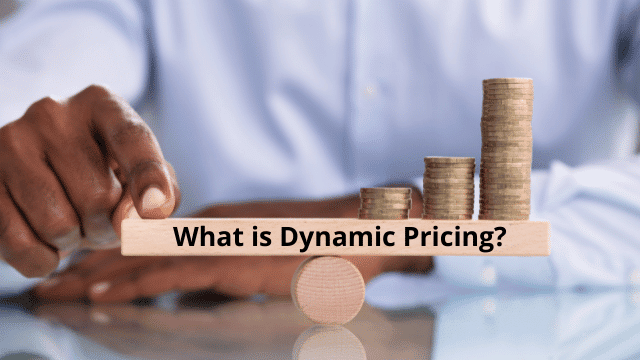Pricing plays a huge role in how a business operates. It is a very strategic and volatile factor when it comes to running a business. Some businesses, such as Apple, sell their products on a fixed pricing model. Products sold on a fixed pricing model tend to deviate from their original price that has been set in stone. However, there’s another type of pricing model, Dynamic Pricing.
In this article, we’re going to look at what Dynamic pricing is and how you can integrate it into your price monitoring strategies. Read on to find out more!
What is dynamic pricing?
Dynamic pricing is also known as demand pricing, time-based pricing, or surge pricing. This is the concept of selling the same product at varying prices to different groups of customers. It is quite similar to the illegal practice called “price discrimination”. However, the laws that cover these practices have plenty of loopholes. This means that it can be hard to win a lawsuit based on price discrimination, especially when it comes to online non-commodity goods.
Dynamic pricing is one of the many pricing strategies. Businesses that use dynamic pricing have very flexible pricing policies based on the current market situation and demands. Simply put, dynamic pricing is a pricing strategy where products are continuously adjusted. These adjustments could happen in minutes, hours, or even days, depending on the business’ market. Businesses use various tools such as price monitoring and algorithms based on various factors. This includes supply and demand, competitor pricing, and other external factors.
Examples of dynamic pricing
Segmented pricing (dynamic pricing based on groups)
In this type of dynamic pricing, companies and businesses use special machine learning algorithms to offer different prices for different groups of people. The complexity of this kind of dynamic pricing depends on each company. Some can be as simple as doing a split A/B test. It can also be a lot more sophisticated, adding different factors such as location, machine type, demographic information, etc.
Dynamic pricing based on time
As the name suggests, dynamic pricing based on time has their prices change based on time. It can either go up or down, depending on what time of the year, month, or day it is. This is to ensure that businesses can maximize their revenue for various events during a year. It also allows businesses to meet the different levels of demand throughout the year.
Supply limited dynamic pricing
This type of dynamic pricing looks at its customer’s behavior. A limited supply dynamic pricing approach entirely depends on the changes in its customer’s behavior. It is one of the most common types of pricing strategy in the travel and transportation industries. These industries most often have limited supply such as decreasing the number of airline seats.
Price matching
This type of dynamic pricing is very competitive. Price matching means that a business will change the price of their goods or services because their competitors changed their prices. This type of pricing strategy is very common in the retail industry. It is not based on expiration dates or changes in customer demand.
Changing market conditions
Due to the market always changing, due to various factors, a business must act accordingly to avoid receiving major losses. Monitoring the market’s situation is important in any pricing strategy.
Peak load pricing
Peak Load Pricing, or just Peak Pricing, is a pricing strategy that is utilized in various industries. It involves businesses raising their prices during the peak hours of their business time. A good example of this type of dynamic pricing is hotels that charge more during weekends or holidays.
Penetration pricing
This type of dynamic pricing is used when a business wants to reach a large portion of a specific market. To attract more customers, a new business may offer their products or services below the market average price. Then once enough customers are on board, they increase their prices slightly over time.
Benefits of dynamic pricing for businesses
Here are the various benefits you can enjoy when you practice proper dynamic pricing strategies.
Increase in sales
A proper dynamic pricing strategy can let businesses drive their prices in both directions at the most optimal time. Businesses can choose to increase their prices when there’s plenty of demand, capitalizing on it. They can also choose to lower their prices to increase sales numbers.
Read Also: Who Are Consultants and What Do They Do?
Keeps your business competitive
Utilizing dynamic pricing can keep you competitive in a large and varied market. This is because a dynamic pricing strategy won’t leave your prices stagnant and behind the trends of the industry. By staying on top of the market, you drive more customers to your business, whether its target audience is located in Germany, Japan, or elsewhere. To boost the performance of your business in Japan, try out residential and datacenter proxies presented on the Oxylabs website.
Learn more about your customer base
Finally, you’ll be able to gather more information on your customer’s behavior; what they like, what they dislike, the products they pay for the most, etc. You’ll be able to gather and analyze the demand curve of your customers.
Summary
In short, dynamic pricing can provide multiple benefits for your business. The most important one is keeping you on the competitive side of the market. This will enable you to gain more customers and in turn make more sales.

Hello, My name is Shari & I am a writer for the ‘Outlook AppIns’ blog. I’m a CSIT graduate & I’ve been working in the IT industry for 3 years.
